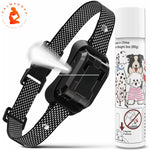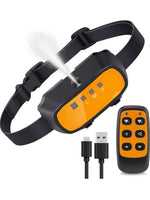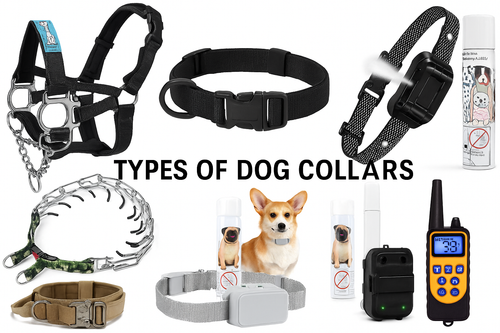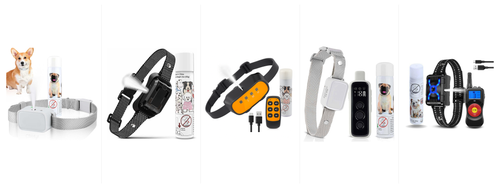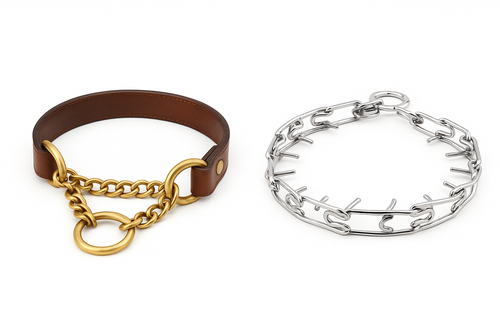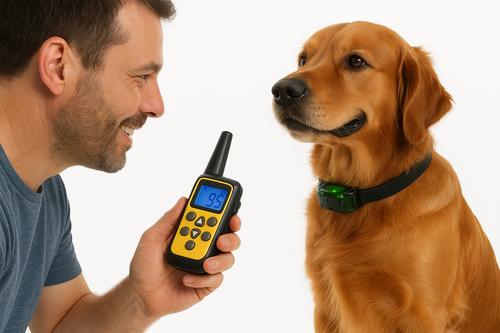If you’ve ever shared your home with a noisy pup, you know how challenging excessive barking can be — for you, your neighbours, and sometimes even your dog. Barking is a completely natural behaviour, but when it becomes constant, it can lead to stress on both sides of the lead. That’s where an anti bark dog collar can come in as a helpful training aid — when used correctly, humanely, and with understanding.
But one of the most common questions dog owners ask is: “Are anti bark collars cruel?” In this guide, we’ll break down exactly what these collars are, how they work, when to use them, and how to make sure they’re a positive part of your dog’s training journey — not something that causes harm or fear.
What Is an Anti Bark Dog Collar?
An anti bark dog collar is a type of training tool designed to discourage excessive barking by giving the dog a mild stimulus (such as a vibration, a citronella spray, or a sound cue) whenever they bark. Unlike old-fashioned or punishment-based collars, most modern anti-bark collars are automatic and adjustable, so they can be adapted to your dog’s temperament and sensitivity.
There are several types of anti bark collars commonly available in the UK:
-
Vibration collars: These give a gentle vibration as a signal to stop barking. (See our vibrating dog collars blog post for more information.)
-
Spray collars: These release a harmless citronella mist near the dog’s nose.
-
Sound collars: Emit a high-frequency sound that’s distracting but not harmful.
-
Static collars: Deliver a mild static correction (DO NOT USE— more on that below).
The goal is not to punish your dog but to create a clear, consistent signal that helps them understand when to stop barking.
When Should You Use an Anti Bark Dog Collar?

It’s important to know that an anti bark dog collar isn’t a magic solution — it works best when combined with training, positive reinforcement, and understanding the root cause of the barking.
Appropriate scenarios for using an anti-bark collar may include:
-
Excessive barking at the door or window — for example, when every passing car triggers a barking session.
-
Separation anxiety barking, when your dog barks continuously when left alone.
-
Alert barking that goes on long after the initial trigger has passed.
-
Overexcitement barking during walks or greetings.
However, these collars should not be used as a substitute for proper training, and never to suppress natural communication entirely. A few minutes of barking is normal — it’s when it becomes constant and disruptive that these tools can help.
Are Anti Bark Collars Cruel?
This is the big question many responsible owners ask: “Are anti bark collars cruel?”
The honest answer is: they can be — if used incorrectly.
But when used properly, especially vibration or spray collars, they can be a safe and humane way to reduce unwanted barking. Here are a few key points:
✅ They don’t have to hurt. Most modern collars don’t rely on pain but on distraction (a light vibration, sound, or spray).
✅ Training matters. A dog should be introduced to the collar gradually, so they associate it with a clear behaviour cue — not fear.
✅ They should never replace attention. If a dog is barking from fear or distress, address the cause first.
✅ Static collars are regulated in the UK, and owners should be aware of the law before using one. (Read our full guide on electric dog collars law UK to learn more.)
The RSPCA and many trainers recommend starting with the least aversive method, like vibration or sound, and always combining it with positive reinforcement.
How to Use an Anti Bark Dog Collar Correctly

Using an anti bark dog collar the right way makes all the difference between a successful training tool and a negative experience.
Here are some expert tips:
-
Start with training. Let your dog wear the collar for short periods without activation so they get used to the feeling.
-
Use the lowest level possible. If the collar has multiple settings, always begin with the mildest.
-
Supervise at first. Never put the collar on and leave your dog alone without knowing how they’ll react.
-
Reward quiet behaviour. When your dog stays calm, reward them with treats or praise to strengthen positive habits.
-
Limit use. Don’t keep the collar on all day — only during specific training sessions or high-trigger times.
-
Check the fit. A loose collar won’t work effectively, and an overly tight one may cause discomfort.
When Not to Use an Anti Bark Dog Collar
Even though these collars can be a helpful tool, they aren’t right for every dog or every situation. Avoid using an anti bark collar if:
-
Your dog is very young (under 6 months).
-
The barking is caused by fear, pain, or health issues.
-
You haven’t identified the underlying cause of the behaviour.
-
Your dog is a rescue with a trauma history — some dogs may find the sensation overwhelming.
In these cases, working with a professional dog trainer or behaviourist can make a world of difference. Tools like collars should support training, not replace it.
The Benefits of Using an Anti Bark Dog Collar (When Done Right)
When used responsibly, an anti bark dog collar can:
-
Reduce constant barking without harsh punishment.
-
Help dogs learn to stay calm in common trigger situations.
-
Improve relationships between owners, neighbours, and the dog.
-
Make it easier for rescue dogs to settle into new environments.
-
Support training for specific goals like recall or calm walking.
It can also help reduce stress — not only for owners but also for dogs. Many dogs bark excessively because they are overstimulated, anxious, or simply not aware of boundaries. A gentle cue helps redirect that behaviour.
Anti Bark Collars and UK Law
The UK has specific rules and debates around the use of training collars. Spray and vibration collars are legal, but static collars fall under tighter restrictions in some regions.
If you’re unsure what’s allowed, it’s best to check our full article on electric dog collars law UK where we break down the latest regulations and explain what is (and isn’t) permitted.
As a responsible owner, always choose the least aversive and most humane option available.
Training Alternatives and Support
An anti bark dog collar is most effective when combined with other training techniques:
-
Teaching the “quiet” cue and rewarding calm behaviour.
-
Redirecting barking triggers with enrichment or distraction.
-
Using a anti bark dog collar for more controlled training sessions.
-
Working with a trainer if the problem persists.
Remember, barking isn’t a “bad” behaviour — it’s communication. Our job is to help our dogs understand when barking is okay and when calm behaviour is needed.
Thoughts: Training With Compassion
So, are anti bark collars cruel?
The answer depends on how they’re used. When chosen thoughtfully, introduced gradually, and paired with positive reinforcement, they can be a humane and effective tool for many dogs. But they should always be used with compassion and understanding — never as a punishment.
If you decide to try an anti bark dog collar, start gently, watch your dog’s reactions, and keep their comfort and well-being at the centre of your approach. Tools should support a loving relationship with your dog — not strain it.




